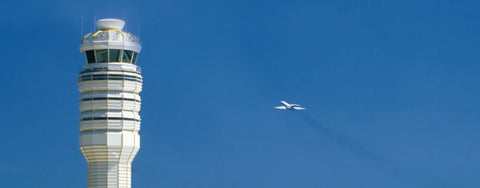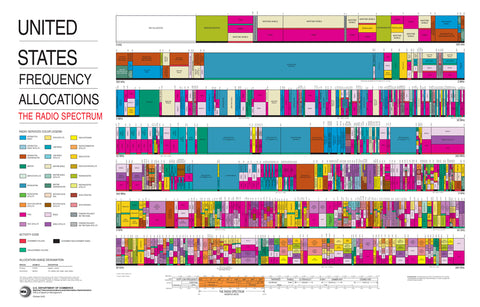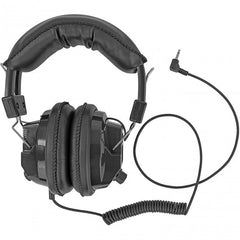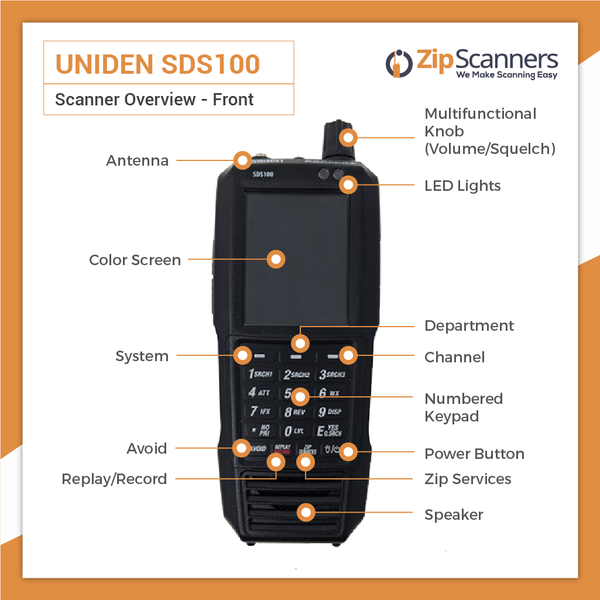Aviation Radio Scanning Ultimate Guide
Whether you're what's called a plane spotter, an aircraft enthusiast who sits outside of airports and monitors air traffic, or just a garden-variety scannerhead, aviation is a rich and rewarding subsect of the scanning hobby that often gets overlooked.
You can listen to approaches and departures, air traffic controllers directing pilots as they lift off, requests for refueling and cleaning, airport ground operations, and more.
All of the technical terms surrounding aviation scanning can be a bit overwhelming, though, especially if you’re new.
That's why we created this guide to give you all the information you need to choose the best aviation scanner.
This guide covers the following:

There are two ways to listen to aviation communication.
Aviation Scanner
You can also listen to aviation communication with an aviation scanner.
Aviation scanners operate like an AM/FM radio in that they can receive signals but cannot transmit.
There are several names for aviation scanners that all mean the same thing:
- Aviation Scanner
- ATC Scanner
- Airport Radio Scanner
- Aircraft Scanner
- Air Traffic Scanner
- Police Scanner
- Aviation Radio
- Police Scanner Radio
- Scanner
Stream Online & Apps
There are several places online where you can find free feeds of aviation communication.
There are also scanner apps where you can listen to aviation communication such as LiveATC.
While online feeds and apps have opened up aviation scanning to a whole new generation, there are several limitations to them including:
- Online feeds and apps are just streams from other people’s scanners, so you are reliant on them to keep their feed up.
- In an emergency, these feeds can and have been taken down (this happened during the Boston Marathon bombing).
- Airshows cannot be scanned; there is no feed for them.
- Finding smaller channels like cargo, private flights, airport security, or maintenance is difficult.
Airborne communication can be heard 100 miles away. Lots to listen to including:
- Approach Control Pilots communicate with the approach control who is responsible for sequencing incoming aircraft for runways specified by the tower.
- Ground Control Tells pilots which runway and taxiways to use.
- Local Control Issues clearances for takeoff and landing, as well as sequencing in the local pattern at municipal airports.
- ARTCC's (Air Route Traffic Control Centers) Once the aircraft leaves the airports’ airspace they are handed off to the ATC.
- CTAF (Common Traffic Advisory Frequency) Used at smaller airports (non-towered) for pilots to communicate arrivals and departures.
- UNICOM (Universal Communications) Common at airports with no tower or FSS.
- ATIS (Automatic Terminal Information Service) Each airport has a frequency that continuously plays a recorded message giving pilots flight information, weather, runway details, etc.
- Airshows Listen to all the communication at airshows such as the Blue Angels.
- Military Communication (Milcom) Listen to bombers, air fighters, transport planes, helicopters and more.
- Additional Flight Blimps, hot air balloons, NASA, helicopters.
Aviation scanners are popular with:
- Aviation enthusiasts and fans
- Amateur radio hobbyists
- Pilots
- Emergency personnel (firefighters, police, EMS, etc.)
- Airport staff
- Air show attendees
Anyone can use an aviation scanner to hear what’s going on in their area.
Public airwaves in the US are free to listen to.
A few states have restrictions about listening in your vehicle, you can read more about scanner laws in the US.

As you can see from the image above, the radio frequency spectrum in the US is quite complicated.
For a full explanation of the radio frequency spectrum you can read more here and/or here.
For the purpose of aviation scanning and to keep this article brief(ish), there are two relevant formats:
Civilian Aviation Communication = Analog: Any scanner we sell can pick up all civilian aviation communication.
The most popular scanner type is analog as these scanners cost around $100, whereas the new digital scanners cost around $400.
Military Aviation Communication = Analog & Phase 2 Digital: Military Aviation Communication, or milcom, is broadcast using 2 formats:
If you want to hear all military communication you will need a phase 2 digital scanner.
There is no easy way to look up what format each area is broadcast in (Milcom bands are not published for security reasons) the best way to determine this is to ask others in your area.
You can find aviation scanning resources and regional resources here or buy a phase 2 digital scanner and you'll be set.
Worth noting is that most military planes use analog channels at air shows so civilians can listen.
Programming each aviation scanner is unique as each airport has its own frequencies (codes).
Some aviation scanners consider the setup and programming as part of the fun. Others simply want this to work right out of the box. For these users we offer expert programming.
Once your scanner is programmed you should be set as aviation frequencies rarely, if ever, change.
What is the Best Aviation Scanner?
Military & Civilian - We recommend the Uniden SDS100.
Civilian only - We recommend the Uniden SR30C.
There are a lot of aviation scanners on the market and—like most electronics—you get what you pay for.
There are 3 main things to consider when buying a aviation scanner:
Frequency Bands
While it is easy to buy a digital scanner and be able to listen to everything, aviation scanners that pick up different formats vary greatly in cost:
- Digital Scanners = $399+
- Analog Scanners = $99+
Where Will You Listen
There are 2 ‘types’ of aviation scanners.
- Handheld - Handheld police scanners are portable and can be carried around like a walkie-talkie.
- Home & Vehicle - Vehicle police scanners can be installed in the dashboard of a vehicle like a CD player. Home or "base" police scanners are typically used in one location.
The type of scanner you buy is based solely on your own personal preference and where you will be listening from.
Handheld scanners are by far the most popular due to their portability and lower cost.
Aviation Scanner Manufacturers
There are two scanner manufacturers Whistler & Uniden. Both are solid manufacturers, have a year one warranty & have comparable models across the board.
Aviation Scanner Antenna

If you plan on scanning from your home or vehicle you may want an antenna to increase what you can pick up on your scanner.
The type of antenna you need varies greatly based on where you live, what you want to listen to, types of structures nearby (buildings, trees, hills) that may block signal, and several other considerations.
30 miles is the ball park range on all police scanners with the antenna that comes with them. External antennas can increase this by about 50%.
Contact us and we can help you find the best antenna or check out or Antenna Buyer's Guide.
Accessories to Buy with a Handheld Aviation Scanner.
Headset

If you listen outside near the airport or at an airshow it can get very loud so over-ear headphones are recommended.
Splitter

If you’re going to listen to the same aviation scanner as someone else via headphones, you’ll want a splitter.
Batteries
Handheld aviation scanners typically last 4-6 hours per charge and all handheld aviation scanners use AA batteries.
AC (wall) & DC (car) Charger
All handheld aviation scanners come with a USB cord only so you will need to purchase an AC (wall) adapter to charge at home and a DC (car) adapter to charge in your vehicle.
How Far Away Will My Aviation Scanner Work?
About 100 miles from planes in the sky, but from airports it will vary greatly based on where you live and what’s around you (buildings, trees, hills, etc.).
Scanners work on line of site and from the tower; 30-50 miles is the range.
How Do I Program My Scanner?
We can program your aviation scanner for you which is free with purchase.
Each scanner is different, please consult your owner’s manual or visit your scanners' product page to see details on that particular scanner.
What Is The Best Aviation Scanner?
Military & Civilian - We recommend the Uniden SDS100.
Civilian only - We recommend the Uniden SR30C.
Are Aviation Scanners Legal?
Yes. Here is an article that goes into great detail regarding scanning laws in the US.

Aviation Scanning Wrap-Up
Aviation scanning can be stupid straight forward or crazy convoluted.
The answers you need can fall anywhere in between those two extremes.
You've torn apart this guide and still can't find an answer to your question(s)?
Please reach out to zip@zipscanners.com













































